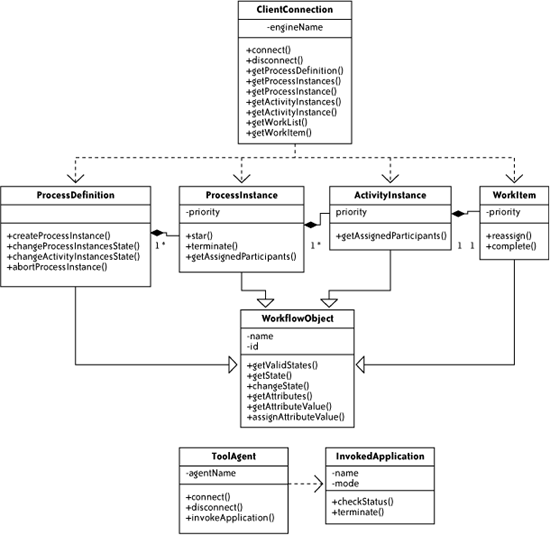WAPI
WAPI[*] is the API offered by the enactment service for use by client applications, invoked applications, and administration and monitoring applications. WfMC’s lengthy specification (171 pages), which is mostly a catalog of API functions, is devoid of examples. Specifications are provided in three languages: C, CORBA IDL, and COM Automation. The section on C emphasizes the API’s functional breakdown, whereas the IDL and COM chapters provide an object-oriented view. The object-oriented view, depicted in the UML class diagram in Figure 7-5, can help you visualize the overall structure of WAPI.
The main class, ClientConnection, representing the main
capabilities of WAPI, uses classes ProcessDefinition, ProcessInstance, ActivityInstance, and WorkItem, each of which inherits from
WorkflowObject. A process
definition has one or more process instances, which in turn has one or
more activities instances, which can have a work item. The ToolAgent class creates an InvokedApplication class to perform the
processing of a particular application invocation.
WAPI Functional Categories
The main functional components can be broken down into the following categories: connection, process control, activity control, worklist, administration, and application invocation.
 |
Connection
The connection category allows an application to connect to and disconnect from a workflow ...
Get Essential Business Process Modeling now with the O’Reilly learning platform.
O’Reilly members experience books, live events, courses curated by job role, and more from O’Reilly and nearly 200 top publishers.

